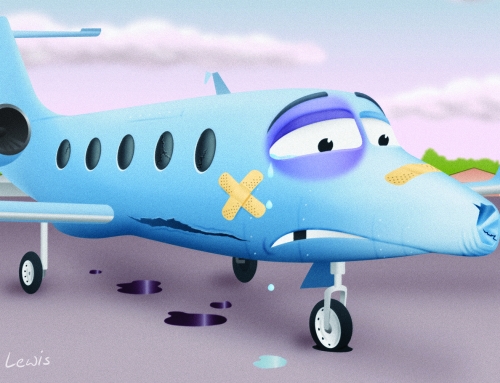Foreign Object Engine Damage (FOD) can be dramatic such as ingesting a large bird on take-off or almost imperceptible as when sand is drawn into the engine. Either way, if you haven’t gone through a FOD event before, you may be in for a few surprises.
Most people think that their basic hull insurance covers the full cost of repairing an engine damaged by foreign objects. But does insurance cover all of the costs related to putting the engine(s) back into service on the aircraft?
Fortunately many major insurers maintain a zero dollar ($0.00) deductible for FOD issues and your hull insurance should cover the actual FOD repairs including the cost to remove, transport and reinstallation the engine after the repair. However there are some additional cost items that you should be aware of.
When a Maintenance Repair and Overhaul (MRO) shop receives a damaged engine, it is disassembled for evaluation and repair. That’s when things can start to get complicated. Every component that is removed must be examined to make sure that it is serviceable, within tolerance and up to OEM specifications.
For example, the MRO facility may discover that turbine blades have eroded and/or corroded and must be repaired or replaced. Bearings may be scorched and require replacement. Discs, impellers and combustion cases may be warped and unusable, even though the engine had been functioning normally before the FOD event.
If parts were not damaged by FOD but must be replaced in order to return the engine to service, your hull insurance will not cover the cost of these parts or labor associated with their repair or replacement.
With higher time engines, more wear should be expected and additional components will likely need to be replaced before the engine(s) can be returned to service. The cost of these additional non-FOD repairs can easily exceed hundreds of thousands of dollars.
Replacement of Life Limited Components
Your hull insurance coverage is not designed to provide a new engine after a FOD incident occurs. Your insurance is designed to return your aircraft to the condition it was in before the event. That is where the question of Life Limited Parts and Components comes up. These parts and components require replacement after a prescribed number of hours or cycles. If they must be replaced as a result of a FOD event, a cost allocation adjustment must be made.
The cost adjustment is accomplished by dividing the current hours or cycles that have accrued on the part by the manufacturer’s service life for that part. The owner is responsible for covering the cost of the limited life component that has already been “consumed” through accrued hours or cycles.
No matter what the situation, it is best to understand what your cost exposures and obligations are before an incident happens. If you have any questions, contact your Aircraft Insurance Broker and review your policy coverage with them.





Leave A Comment